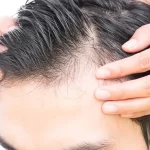Your system transmits nerve signals through your spinal cord to your brain, preventing injuries by making you aware that something might be wrong. Unfortunately, the transmission will not be effective when your nerves malfunction and fail to work sufficiently. Your healthcare provider might recommend options like spinal cord stimulation in such an instance. Spinal cord stimulation in Houston is steadily becoming a chronic pain treatment of choice, with patients seeking long-term options to disrupt the pain signals. The stimulator might be an ideal option, especially if your surgeon cannot repair the damage.
What does a spinal cord stimulator do?
The spinal cord stimulator (SCS) is a device your surgeon places beneath your skin to send mild electric currents to your brain, interrupting the pain signals. When you turn on the SCS, the electrodes carrying the currents stimulate your nerves in the treatment area, modifying and masking the pain signals, thus preventing them from reaching your brain as symptoms. As a result, your brain interprets the symptom as painless tingling sensations. However, SCS does not eliminate your pain source. Instead, it changes your brain’s perception. Additionally, stimulation might not be effective in all chronic-pain patients. While some individuals might find the sensations unbearable, others might not get relief in their entire treatment areas.
The generator your surgeon will use can either be chargeable or rechargeable. While a non-rechargeable system might need replacement after around 2-5years, depending on how frequently you use the device. On the other hand, rechargeable systems might take approximately ten years before replacement. However, you might need to charge the generator often.
Why would your surgeon recommend spinal cord stimulation?
Anyone undergoing chronic pain hopes to find treatment to alleviate his debilitating symptoms. However, unlike a nerve compression that might need a procedure to minimize the pressure on the affected nerve, sometimes your surgeon may suggest treatment without eliminating the cause of pain or repairing the injury. In such an instance, spinal cord stimulation might (SCS) be an option. The technology advancement consists of an electrode that your healthcare provider connects to a generator. Placing the device over your spinal cord prevents the pain signals from traveling to your brain. However, before you go for SCS, your surgeon might suggest mental health counseling to help you understand how to manage the device beneath your skin. The physician might take you through a trial process to determine the effectiveness of the treatment by placing two wires outside your spine, allowing you to control the stimulation. Your surgeon will consider the treatment successful if it alleviates a significant of your pain.
After a successful trial, the medical expert places a permanent stimulator by making tiny incisions in your back and near your waist. Your surgeon will then place the electrode through the back incision. The wire then tunnels beneath your skin to the waist incision to connect to a battery-powered generator. Your healthcare provider will then test the system to determine its effectiveness before closing the incisions. The medical professional will give you a hand-held remote for adjustments when necessary.
Though SCS effectively relieves chronic pain, your surgeon will evaluate your pain history before suggesting the treatment. Contact your physician for more inquiries about spinal cord stimulation.











